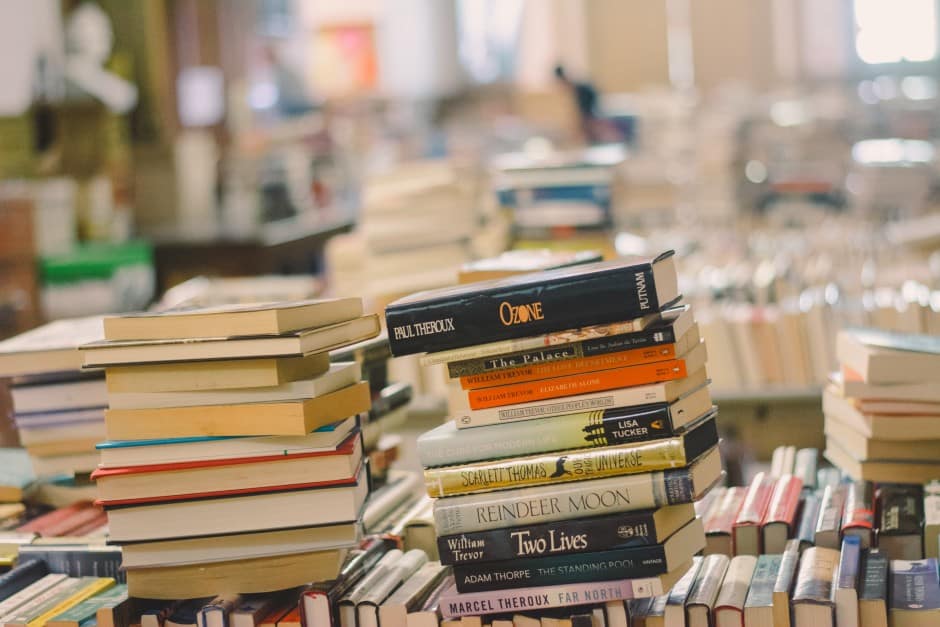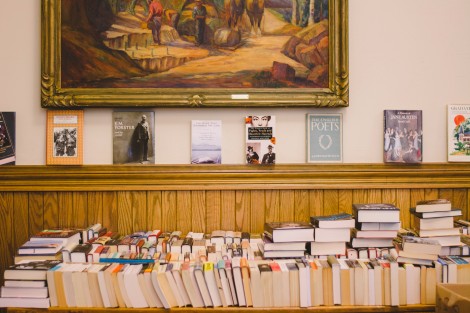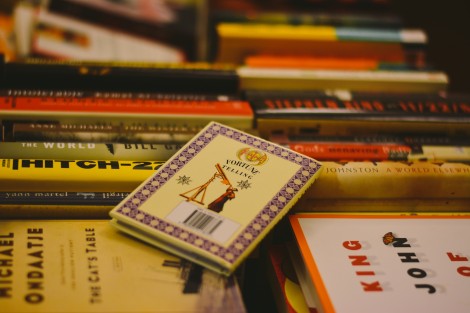Nestled within the looming figure of Robarts library is a vault of treasure available to all students at the university for free.
The Thomas Fisher Rare Book Library, the largest rare book library in Canada, houses a veritable bounty of literary treasures, ranging from texts from the dawn of print to the personal papers of Margaret Atwood and Leonard Cohen.
The library, which opened in 1973, was named in honour of Thomas Fisher by his great grandsons, Sidney and Charles Fisher. The Fishers donated a substantial collection of texts, including the only complete copy of Shakespeare’s First Folio in Canada, which remains a cornerstone of the library’s collection.
The definition of what constitutes a rare book is far from simple.
“It’s difficult to answer in a way, and in one way it’s easy,” said Deborah Whiteman, head of the Department of Rare Books and Special Collections at the library. “You can say something’s rare if there are only a few copies in the world,” she said.
The rarity of a text can also be determined by whether it is a rare edition — only a few copies were printed to begin with — or whether it is a book that has become scarce due to popularity and high readership.
Another key component is monetary worth; “Value, certainly,” said Whiteman, “Something that is extremely expensive; any important scientific book, for example, like Darwin’s Origin of Species.”
As for what defines a rare book library, Whiteman added, “[The library] holds things that are mostly pre-1900 and a lot of really early things from the cradle era of printing — so the fifteenth, sixteenth, and seventeenth centuries. They’re not books that could go in the regular circulating stacks at Robarts.”
The Fisher experience
One of the somewhat unique aspects of the library is its accessibility; patrons are welcome to handle the majority of the library’s collection. “We try to be very user friendly,” says Whiteman, “We don’t use gloves anymore, we just ask that students have clean hands and give them a quick demonstration about how to handle a rare book.”
Although the physical texts hold a place of esteem, the library digitizes some of its collection.
“We sort of curate and select what we choose to digitize. We try to choose things that we think will be interesting and will attract people to our collections,” said Whiteman. She added that for some of the books in the collection, digitization would be pointless since their value comes from being a relic of a specific time period, not from the words they contain.
For Whiteman, digital texts and physical texts work in tandem.
“I think they work beautifully together, but we need them both … when you look at a digital version you’re mostly getting the content,” she said, adding, “[The physical books] have so much information to give us — the binding, the printing, the paper — there’s so much that they tell us.”
Beyond the stacks
The Thomas Fisher Rare Book Library, though the largest, is not the only home to rare books on campus. Annual book sales hosted by Trinity, St. Michael’s, Victoria, and University colleges also boast a selection of rare books.
According to Linda Corman, director of the John W. Graham Library at Trinity College, the college’s book sale has always boasted a substantial “rare and collectable” section.
“We have had many rare first editions of numerous major authors from around the world, such as Nabokov’s 1955 Paris edition of Lolita … [as well as] a collection of European fine press limited editions of the works of Goethe,” said Corman.
Corman agreed with Whiteman that part of the draw of rare books is not necessarily in the words of the texts, but the experience of handling the text — something incompatible with digitization. “Both [physical books and e-books] are good, but I would hate to see young people miss the opportunity to appreciate the care and craftsmanship that goes into the production of a printed book,” she said.
In order to be accepted for the Trinity College book sale, older texts must “still be useful,” according to Corman, meaning that they must still be of interest. The condition of the text is also important; books should have the binding intact and be unmarked. Some exceptions are made: “[If they are] very rare and valuable … the condition can be somewhat less than ‘mint,’” said Corman.
Securing a rare find is always exciting. “Every year we handle thousands of books,” said Genevieve Cowgill, an organizer of the University College book sale. “One has to be very careful — a book, innocuous in appearance … may sift through your fingers.”
Cowgill makes the important distinction that a book does not necessarily need to be old in order to be rare. “A first edition of [Ian Fleming’s] Casino Royale or Tolkien’s Lord of the Rings, depending on the condition, may be considered rare and worth a great deal of money,” she said.
That being said, the value of rare books is not always monetary. “There are qualities of the printed book that are relevant to a complete understanding of the text itself and its social context,” said Corman.
A piece of history
In some instances, it is not the texts, but the people who owned them that qualify a book as rare. The Fisher Library houses a copy of Thomas Gray’s An Elegy Written in a Country Churchyard once owned by General James Wolfe; though the poem itself is not rare, the annotations added by Wolfe are one of a kind.
This aspect of rare books is what Whiteman calls their artifactual value. “The text gives us knowledge, but the book itself is an artefact,” she explained.
In many ways, this is what makes the handling and reading of a rare text so unique. “It’s an intimate experience,” said Whiteman, “There’s so much you can learn from touching and smelling and interacting with the artifact. They tell a story, for sure.”
Preserving these stories is very much a part of the safeguarding of rare texts. Surprisingly, many books from the fifteenth to seventeenth centuries are in good shape. As Whiteman explained, “They will last because of the materials they’re made of — handmade, cotton rag paper will never disintegrate the way modern paper does.”
In the nineteenth century, a switch was temporarily made from cotton-based paper to paper made from wood pulp — the acid in the latter is the culprit behind what the library staff call “brittle books.”
According to Whiteman, the vast majority of these books were printed in the period from 1850 to the beginning of World War I. “Often we open them and pieces of paper fall apart in your hands,” she said.
As for the majority of the rare books housed in the Fisher Library, said Whiteman, “They will outlast all of us. “




